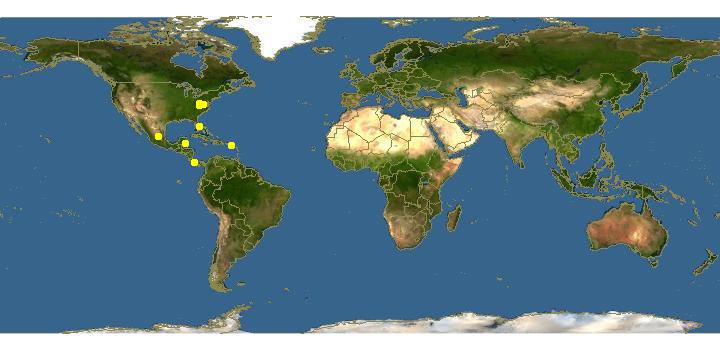
Click on map for details about points.
|
|
Overview | |
Cultivated on low-nutrient substrates such as weak hay infusion or 0.05% lactose, 0.025% yeast extract agars in association with Klebsiella pneumoniae at 23-26 C. Sorocarps very delicate, gregarious, uncolored, erect or nearly so, consisting of unbranched, acellular sorophores commonly 750-1500 Ám in length and ranging from 1.0-3.0 Ám in diam. at the base to 0.5-1.0 Ám at the summit. Sori terminal, globose, whitish to hyaline, mostly 30-55 Ám in diam., sometimes less, rarely more. Spores globose, hyaline, commonly 5.0-7.0 Ám in diam., thin-walled. Cell aggregations typically radiate, variable in size, commonly 1.0-1.5 mm in diam. and fruiting normally, sometimes much larger, up to 1.0 cm or more and usually nonfruiting; sorogens clavate to fusiform, commonly 125-225 Ám in length. Myxamoebae variable in form and dimensions, uninucleate, with filose pseudopodia when moving freely, commonly 12-18 x 7.5-10 Ám. Unaggregated myxamoebae may form globose microcysts, 5.0 to 8.5 Ám in diam. Macrocysts not seen or reported.
|
|
|
Names | |
|
|
|
Links to other sites | |
|
|
|
Acknowledgements | |
The Eumycetozoan Project -- working to understand the ecology, sytematics and evolution of myxomycetes, dictostelids and protostelids -- the true slime molds.
Sponsored by grants from the National Science Foundation.
|
|
|
Feedback |
Please send any corrections and comments about this page to John Shadwick
Department of Biological Sciences, University of Arkansas, Fayetteville, AR 72701, USA
email: jshadwi@uark.edu
phone: USA-479-575-7393.
|
|
| Supported by | |
Updated: 2024-05-04 17:21:11 gmt
|